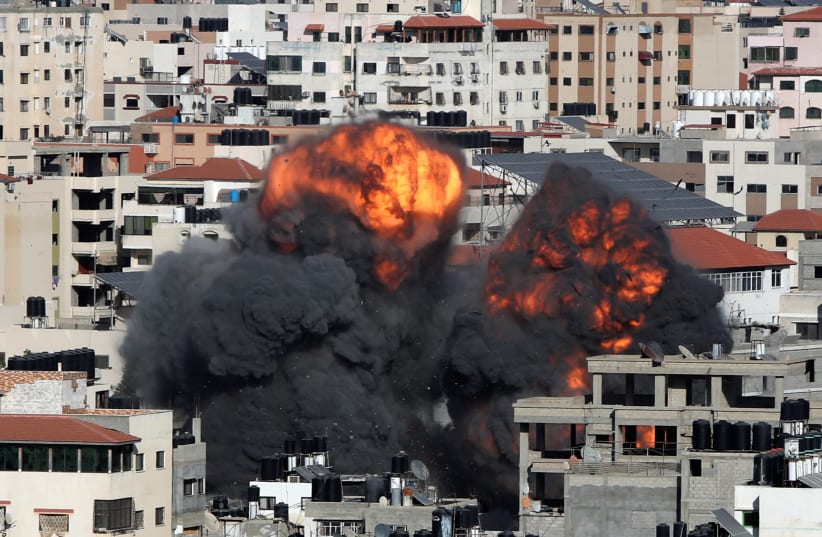At about 9 p.m. on Thursday night, the IDF began assembling ground forces along the Gaza border. Some armored and infantry battalions joined the artillery batteries that had been deployed days earlier to pound Hamas and Islamic Jihad targets.Earlier in the day, the IDF said that a ground offensive was on the table as a viable option for the continuation of Operation Guardians of the Walls. The IDF was hitting hard at Hamas and Palestinian Islamic Jihad targets from the air, but on the ground they would be expected to cause even more damage, albeit with greater risk to the Israeli forces.Prime Minister Benjamin Netanyahu made his contribution, saying Thursday that the campaign against Hamas was far from over and that more Israeli action was coming.At midnight, the IDF Spokesperson’s English department tweeted, “IDF air and ground troops are currently attacking in the Gaza Strip.” Foreign media jumped at the tweet, interpreting it to mean that Israel was sending ground forces into Gaza, a major escalation in the current operation and a sign that it was far from over.
Websites of media outlets around the world, including The Washington Post and ABC, reported the incursion. “Israeli troops have entered the Gaza Strip as conflict with Palestinians escalates, Israeli military says,” was the tweet put out by
The Washington Post.
The problem was that there was no ground invasion. Yes, the IDF had deployed troops along the border, but they did not cross into Gaza. What did happen was in the air, where 160 aircraft had assembled for a massive bombing run over the Gaza Strip. Their target was what the IDF called Hamas’s “Metro”, an underground network of tunnels which Hamas used to store its weapons and to move throughout Gaza, hidden from Israeli aircraft.The “Metro” had been built in the years after the 2014 war in the Gaza Strip, also known as Operation Protective Edge. It was a network of dozens of kilometers of tunnels that crisscrossed Gaza and provided safety from Israeli aerial incursions.According to reports, due to the deployment along the border and the news coming out in the foreign media of a ground incursion, Hamas and Islamic Jihad sent their first-line of defense into the tunnels to start taking up positions. These were the anti-tank missile teams and mortar squads meant to strike at incoming Israeli ground forces.What these Hamas operatives did not know was that there was no ground offensive. Instead, once they were out of the tunnels, they were exposed to Israeli aircraft. Within minutes, the “Metro” attack went ahead. This led to speculation that the tweet about the ground incursion was intentional and made to get Hamas to believe it was safe to enter the tunnels.How many Hamas and Islamic Jihad terrorists were killed in the operation? That remains to be seen. IDF Spokesperson Brig.-Gen. Hidai Zilberman said on Friday that the military was still evaluating the consequences of the operation.
